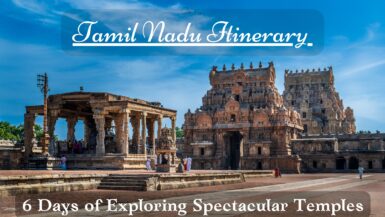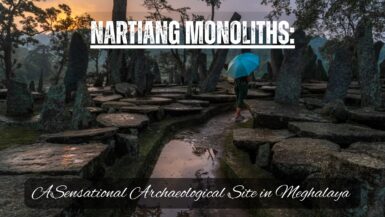Northeast India hosts an array of festivals around the year thanks to its myriad tribal population. One such enthralling festival is the Aoleang Monyu, which is the prime festival of the Konyak tribe of Nagaland. The Konyaks, residing in the Mon district of Nagaland, are known for their brutal past of headhunting and facial tattoos. The Aoleang Monyu is their spring festival, marked by vibrant and joyous celebrations to welcome the New Year as well as the spring.

Table of Contents
When does Aoleang Festival occur:
The Aoleang Festival is a springtime celebration. Traditionally, this festival is supposed to be celebrated on a full moon day after March 25. The Konyak tribes of different villages observe Aoleang on different days as per their convenience. For obvious reasons, this created trouble for students and workers. Hence, for the sake of maintaining uniformity, the Konyak students’ union fixed the festival tenure from the 1st to the 6th of April. This was finalized back in the 50s era and subsequently, the Government of Nagaland started recognizing the first week of April as the Aoleang Festival.
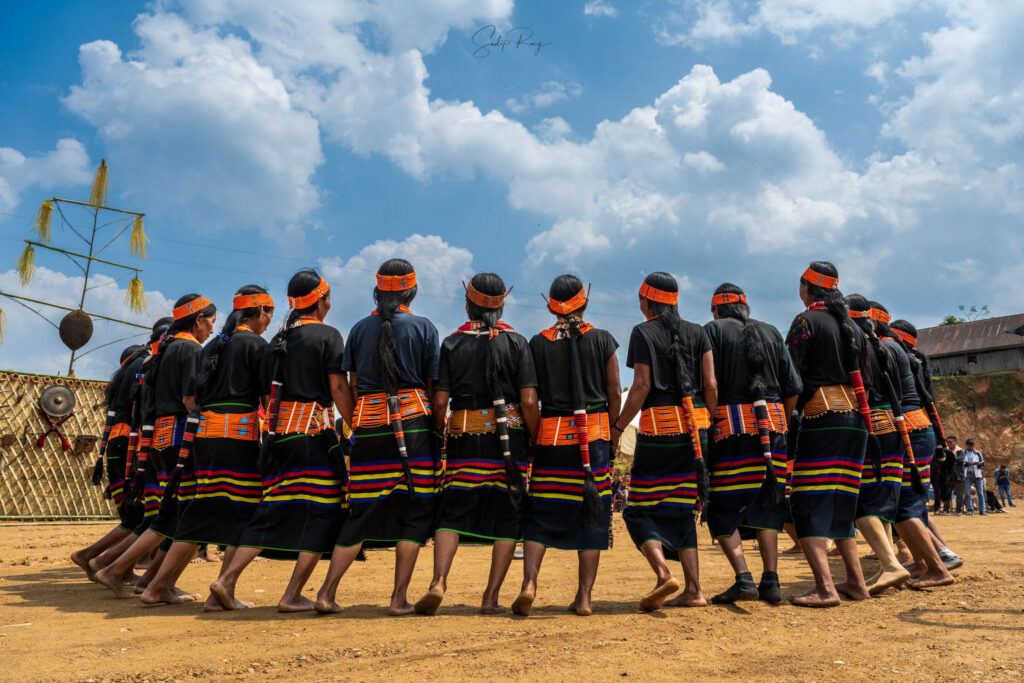
Significance of Aoleang Festival:
The Aoleang Monyu is the most important festival of the Konyak Nagas. It is celebrated to bid farewell to the old year and cold, bitter winter and welcome the New Year signified by the onset of the spring season. It also signals the beginning of a new crop year. During this festival, the Konyak tribe invokes the blessings of ‘Kahwang’ or God upon the land before sowing the seeds.
The Aoleang Festival also signifies getting together family members and meeting relatives and friends. The Konyaks also remember the deceased souls and pay homage to them. They believe that during this time, the spirits of their ancestors visit the realm of the living for blessing the descendants.

The 6-day celebration of Aoleang Monyu:
The six days of the Aoleang Festival have their own significance. Rituals, ceremonies, and celebrations vary every day.
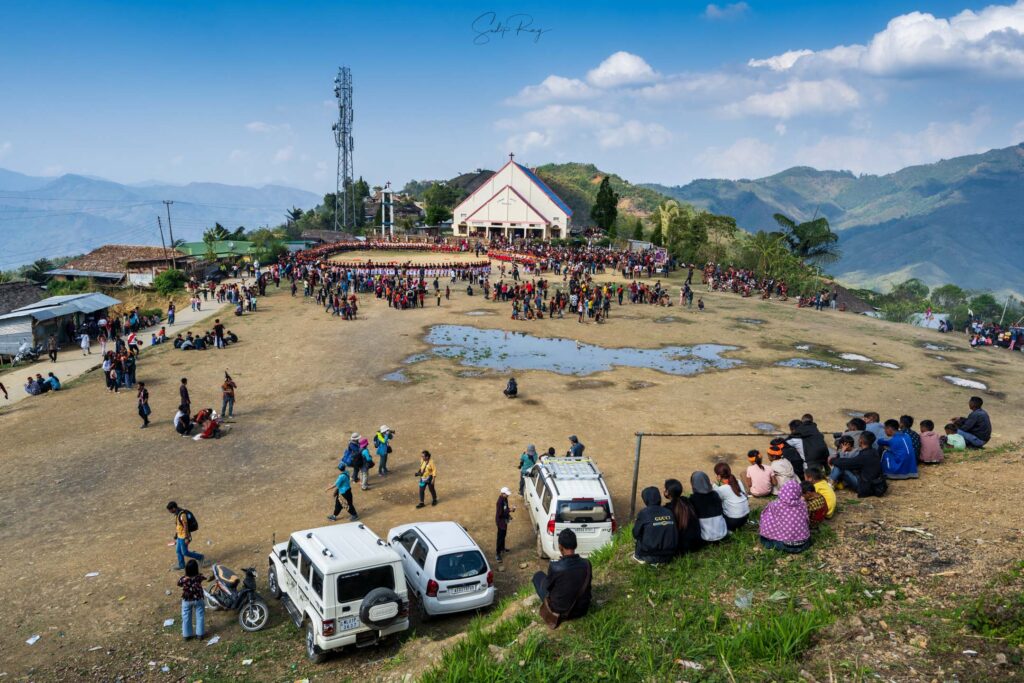
1. Moseang Nyih/Hoiyah-Laiphen Nyih:
The first day of the festival is meant for preparation for the upcoming festivities. Konyak women will complete collecting firewood, palm and banana leaves, and bamboo vessels. They will pluck vegetables and fruits from the forest, assemble the food grains, and fetch water. They will also clean their houses as well as wash the traditional Konyak attires and polish the vibrant ornaments for decking themselves up during the festivals.
The Konyak men will clear the Morungs and decorate them with various Konyak emblems. They will construct the ‘Jankhao-Wakam’, a raised platform right in front of the Morung.
The whole village community participates in cleaning the village, fields of terrace cultivation, and wells. Decoration of other significant venues is also completed on the first day.
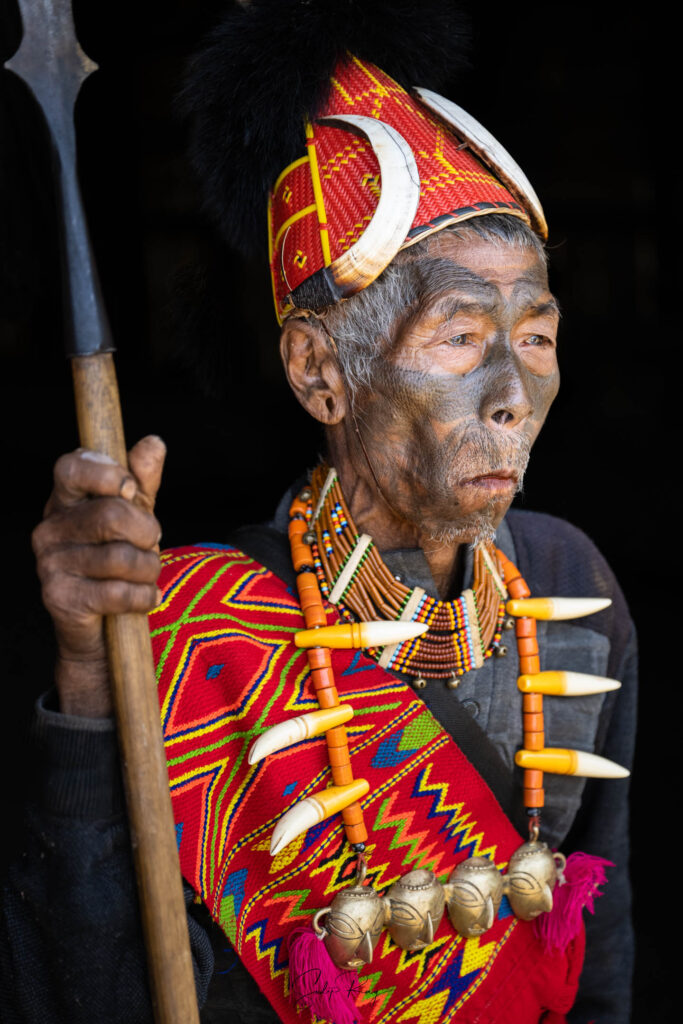
2. Pongkup Wakfu Nyih:
On this day, preparations are made for the slaughtering of animals on the next day. The domestic animals (cows, buffaloes, Mithuns, and pigs) which are meant for slaughtering are gathered together and kept without any food. Sometimes, animals are also purchased solely for feasts.
The Konyaks also consume all the stock of previously preserved meat as new stock of meat will be eaten the very next day. This last meal is known as ‘Vamsong Phong’ or supper meal.
Before sunset, the Konyak men will put up a decorated bamboo pole ‘Zangwan-Keih Phong’ in front of the Morung. Later, they beat the log drum, blow Mithun or buffalo horns, and firecrackers, and shot their guns.

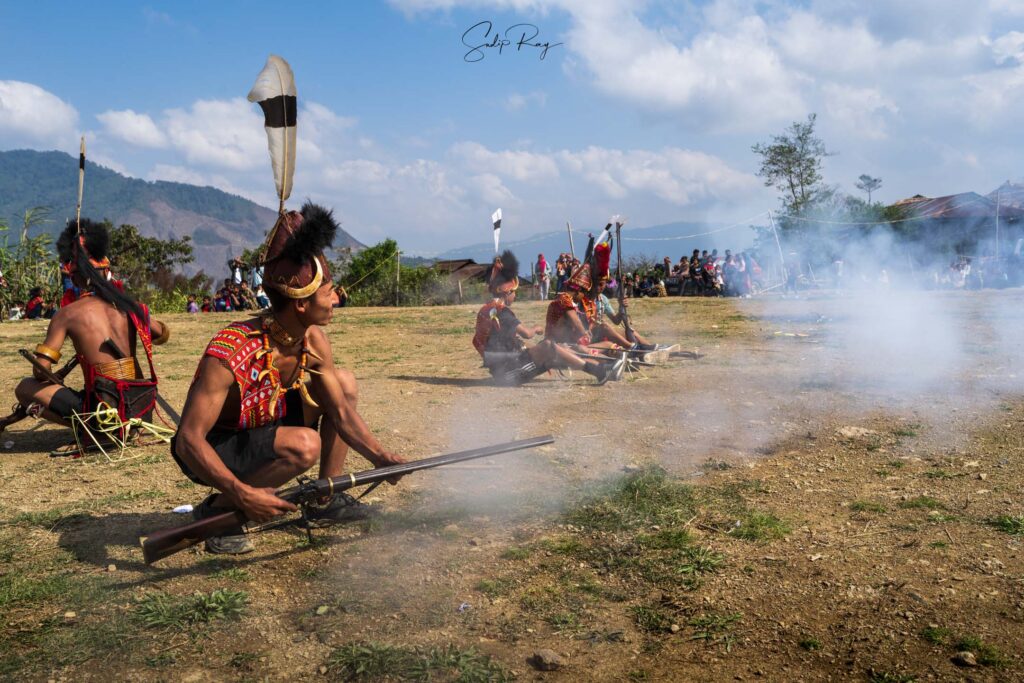
3. Monyu Nyih/Bonglang Nyih:
This day is meant for grand feasts. Animals are slaughtered and elaborate foods are prepared.
At first, the clan leaders and village elders of respective villages gather near the ‘Zangwan-Keih Phong’ in front of the Morung. A chicken is sacrificed, and the village priest tells fortune by reading the intestine of the sacrificed chicken. He will then predict the fate of the upcoming New Year. Afterward, all the assembled men sing a prayer to the ‘Laa Longpa’ and seek blessings on the villagers and the crops. They will beat the log drum and fire their guns for warding off the evil spirits.
Throughout the day, grand feasts will continue in each house. In some villages, it is customary to offer the sinewy meat of the slaughtered animals to the ‘Pongyin Angh’ or Chief Angh.

4. Molik Nyih/Lingnyu Nyih:
This is one of the most joyous days of Aoleang Monyu. The Konyak Nagas put on their best traditional outfits and jewelry, and enjoy their day through singing, dancing, and merry-making. At the Morung, log drums and gongs are beaten, and guns are fired incessantly. The revel and festivities continue till midnight.
Relatives, in-laws, and friends, who were invited to the festival, arrive on this day. Gifts are exchanged and banters are made. Exchanging gifts becomes quite competitive among in-laws. Often, some families even go to the extent of gifting a live Mithun to their in-laws.
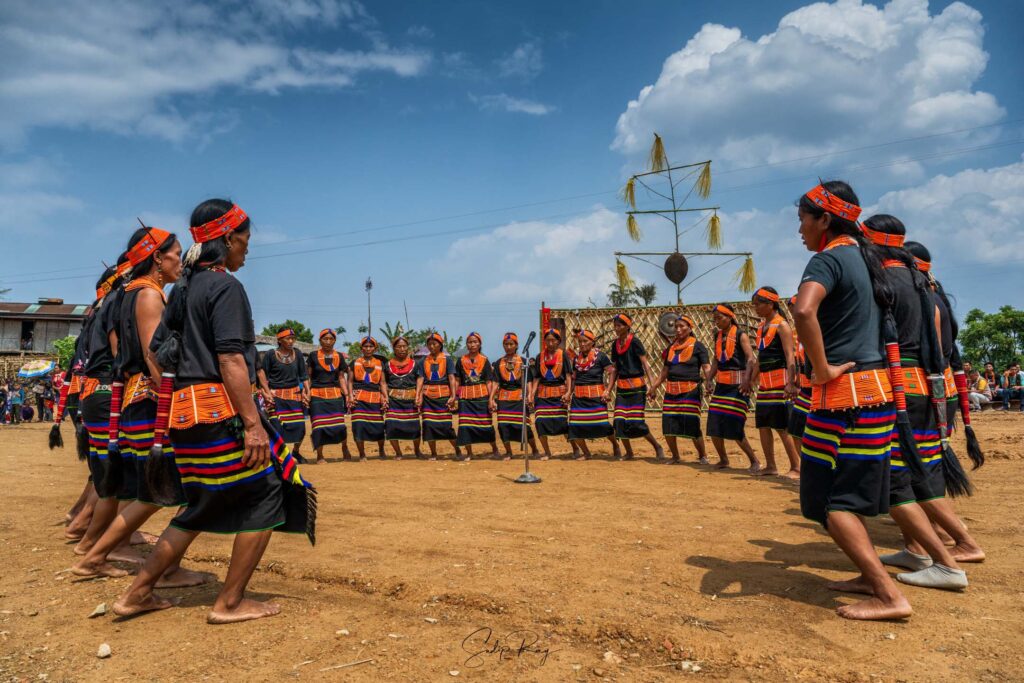
5. Molai Nyih/Lingha Nyih:
The fifth day is marked by remembering those who have passed away. The Konyak families clean the graveyards and prepare a feast called ‘Yim Mo’. They bring a share of ‘Yim Mo’ to the graves of their deceased family members. They have a chat with the deceased since they believe the departed souls can hear the living on this particular day.
This day is also meant for dancing. The Konyaks form groups and dance their heart out while expressing their gratitude for the bounties of the bygone year and hoping for another prosperous year.
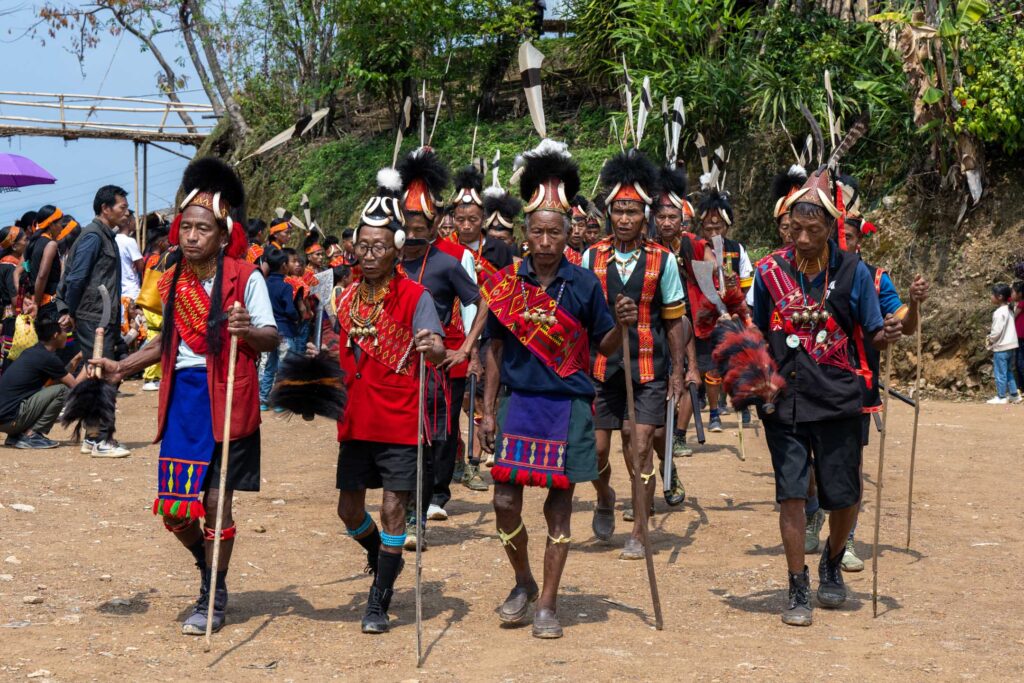
6. Moyan Nyih/Lingshan Nyih:
On the last day of Aoleang Festival, the Konyaks generally retreat inside their homes and take a rest after the weeklong celebrations. They dismantle the various symbols of Aoleang such as the Jankhao-Wakam and Zangwan-Keih Phong. The villages and houses are cleaned. Even the people themselves take a bath and clean themselves.

Highlights of the celebration:
The Aoleang Festival is characterized by feasts, singing and dancing, various sports, and religious rituals. Traditional and elaborate family feasts are organized to which relatives and in-laws are invited. Community feasts are also arranged by the Morungs.

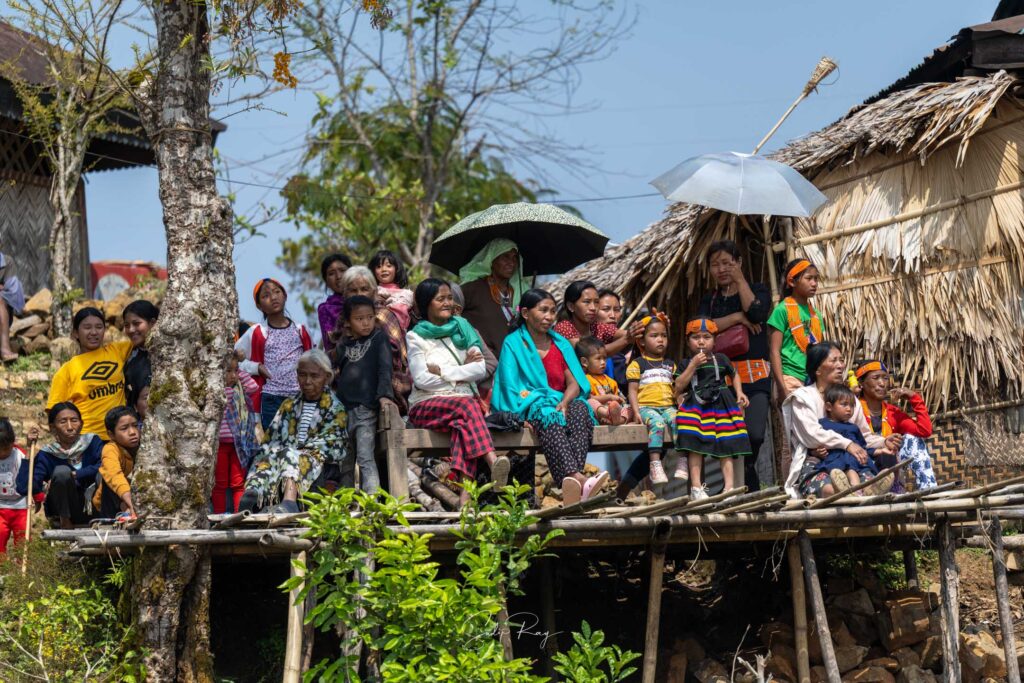
Singing and dancing form an integral part of the celebration. Songs are sung for thanking the Gods for the harvest of the past year. Songs are also sung to request the Gods for showering their continuous blessings on the New Year and pray for another bountiful harvest. Dance competitions are held among the Morung members and peer groups. Even inter-Morung competitions also take place. Furthermore, the Konyak men enact battle scenes during the revelry.

Amusing sports such as meat-eating competitions for men and wool-rolling competitions for women take place amidst much fanfare. Prizes are also distributed among the winners.


Moreover, young men and women of the Konyak community come together during the merrymaking and get a chance to know each other. Hence, the Aoleang Monyu also plays a vital part in the matchmaking of interested couples.
In fact, all these are put together to remind the Konyak Nagas about upholding their culture, tradition, heritage, and rituals in the modern age.
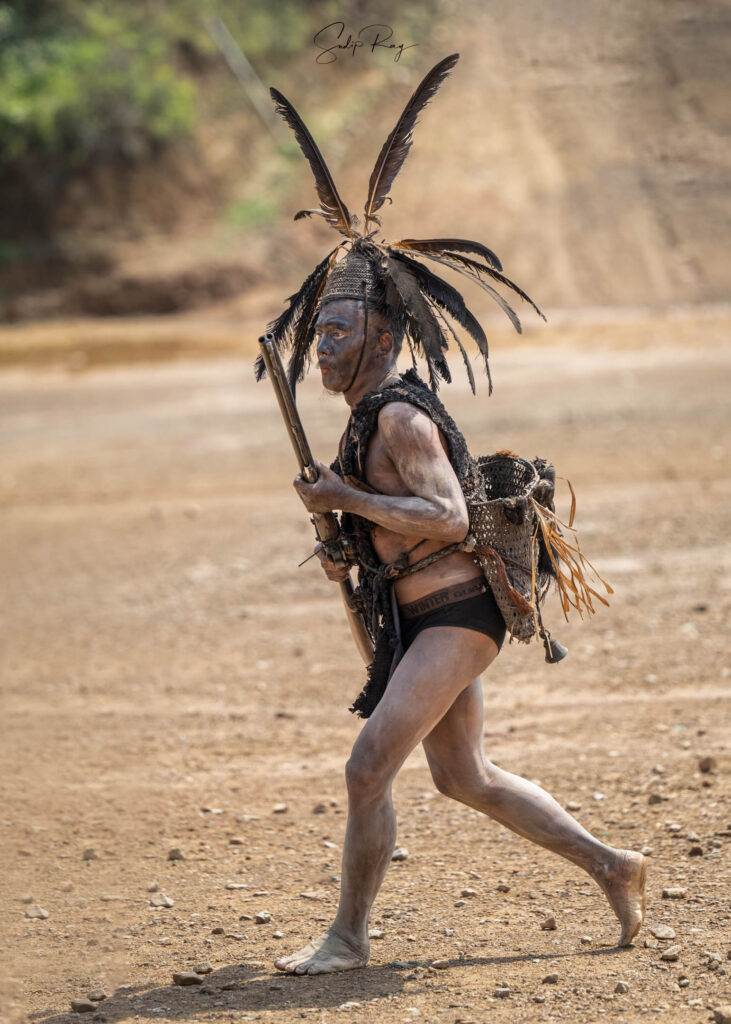
Outfits and ornaments during the Aoleang Monyu:
During the festival, the Konyak Nagas don their traditional dresses. Men put on conical red headgear adorned with the canine of a wild boar and the feather of a Hornbill bird. They wear brass necklaces with pendants resembling miniature human heads. Some older Konyak men put plugs in their ears in the shape of horns. They also wear handwoven shawls and a tight red or black belt around their waist.
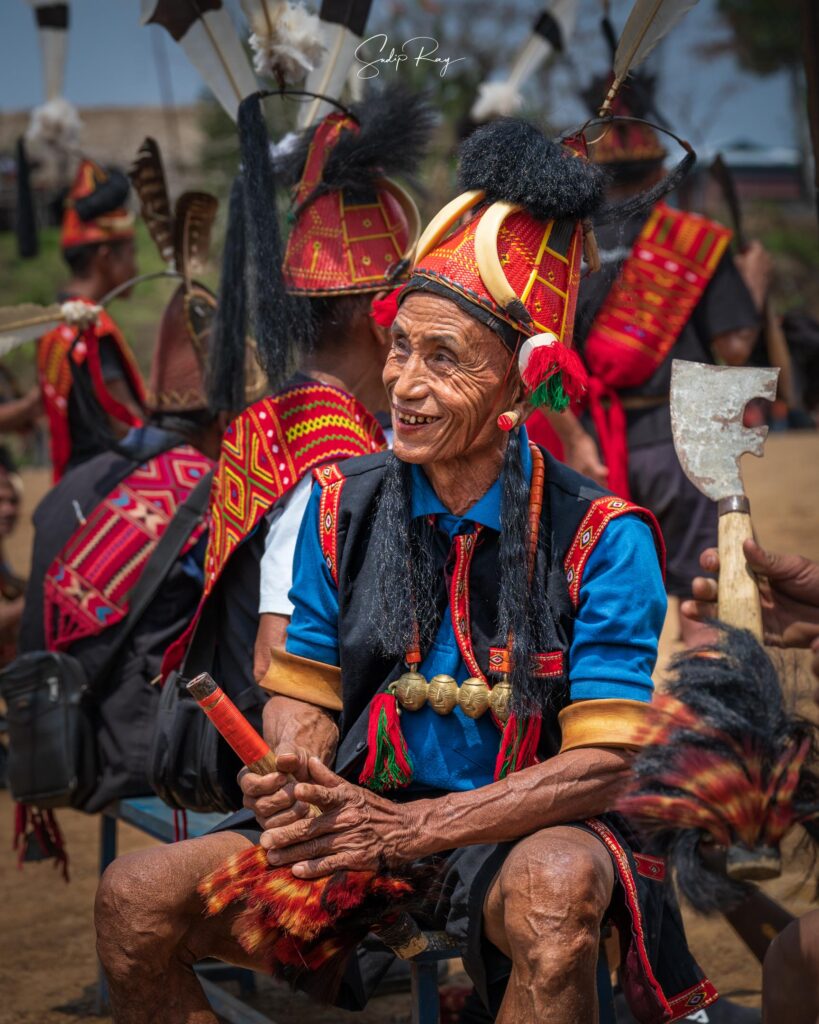
Women wear fascinating and vibrant jewelry made of glass and seed beads as well as conch shells. They adorn themselves with elaborate headpieces, necklaces, waistbands, and earrings. The ornaments are mostly in shades of orange, yellow, red, and blue. The Konyak women wear wrap-around skirts mostly in black shades with green, blue, red, and yellow stripes. The length of the skirts varies – some are knee-length, while the rest are ankle-length. They also wear beautiful shawls.


Food & drinks during the Aoleang Festival:
No Indian festival is complete without food. Obviously, the same goes for the Aoleang Festival also. For the celebrations, traditional and delicious pork and beef dishes are prepared by the Konyak Nagas. The meat is cooked over an open fire and seasoned with local herbs and spices, such as bamboo shoots. The meat is generally served with rice. Rice beer is another essential part of the gastronomic experience. The rice beer is prepared by the community members.
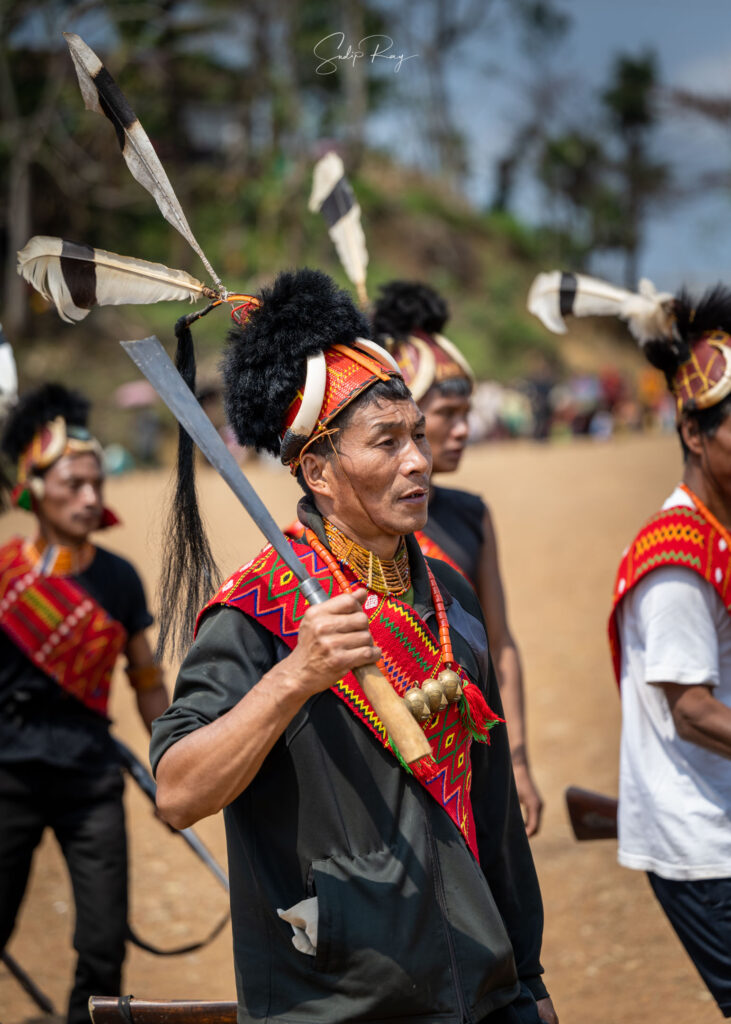
Some FAQs:
Where can I watch Aoleang Festival?
The Aoleang Festival can be experienced in the Mon district of Nagaland. It is the foremost festival of the Konyak Nagas, who reside throughout the Mon district.
How can I reach Mon?
The district headquarter is Mon town. For reaching Mon, you first need to reach Dibrugarh in Assam. Dibrugarh is well-connected with railways and daily flights are also available from Kolkata. From Dibrugarh, Mon is around 115 km away. The distance can be covered in little more than 5 hours since road conditions in Nagaland are quite bad.
Is public transport available in Mon?
Though Assam has a good network of public transport, sadly the same cannot be said about Nagaland. Hence, for a hassle-free journey, we suggest hiring a cab from Dibrugarh to reach Mon town. Try booking SUV vehicle as the roads start getting worse to worst as soon as you enter Mon district.
Where can I stay in Mon?
For staying, check out Teipha Homestay and Helsa Cottages in Mon town. They provide both food and lodging facilities.
What languages do the Konyak Nagas speak?
The Konyak Nagas speak English and Hindi fluently.
Which villages should I visit for Aoleang Festival?
You must visit Longwa, Shengha Chingnyu, Hongphoi, Leangha, Tangnyu, and Mon.
Is it safe to visit the Aoleang Festival?
It is absolutely safe to visit Mon for experiencing Aoleang Festival. The Konyak Nagas are a friendly and ever-smiling bunch of people.

Conclusion:
1. Like most of the other northeastern states of India, you need to have Inner Line Permit (ILP) for visiting Nagaland.
2. While visiting the Konyak villages, take a local guide with you. This will help you to get easy access to the celebrations.
3. In general, we found the Konyak Nagas to be affable and helpful. In every village that we visited, we were welcomed cordially. Also, most of the Konyak Nagas are extremely camera friendly.
4. While visiting the Konyak villages for the Aoleang Festival, please show respect for their tribal traditions and culture.
5. We visited Aoleang Festival as part of a photography tour organized by eminent photographer, Tania Chatterjee. Check out her website for more amazing and interesting tours like this.

